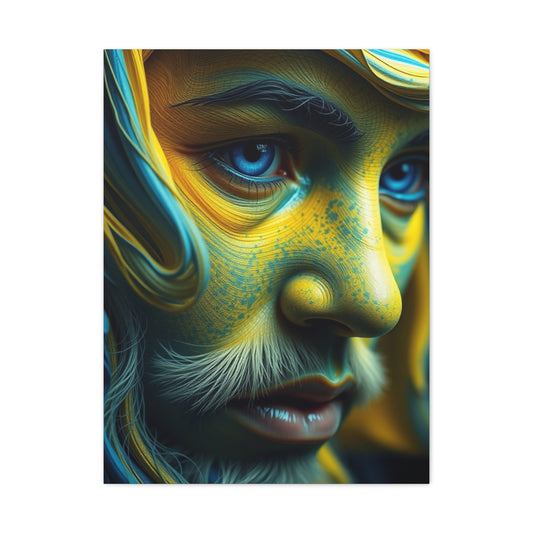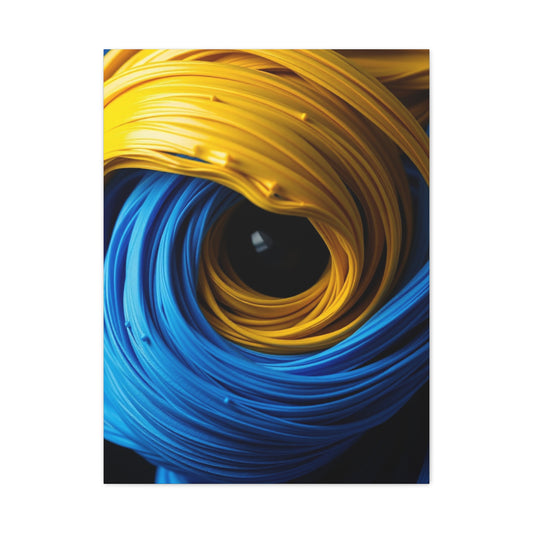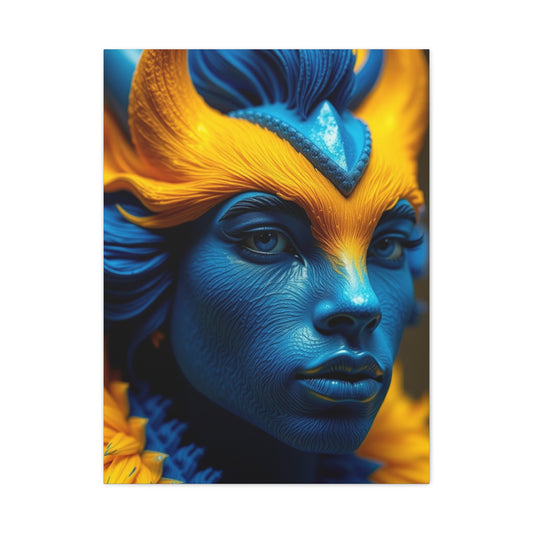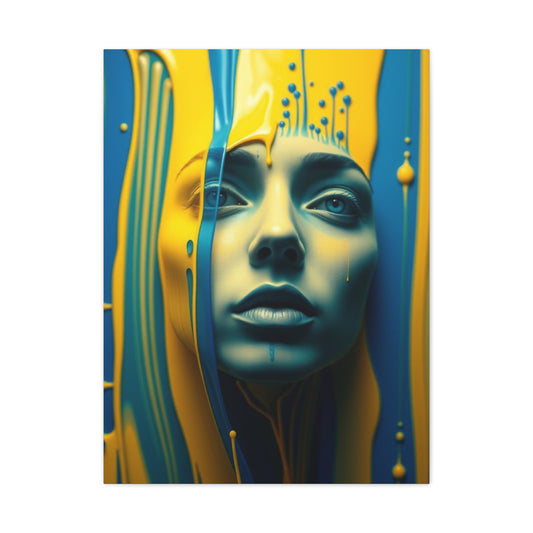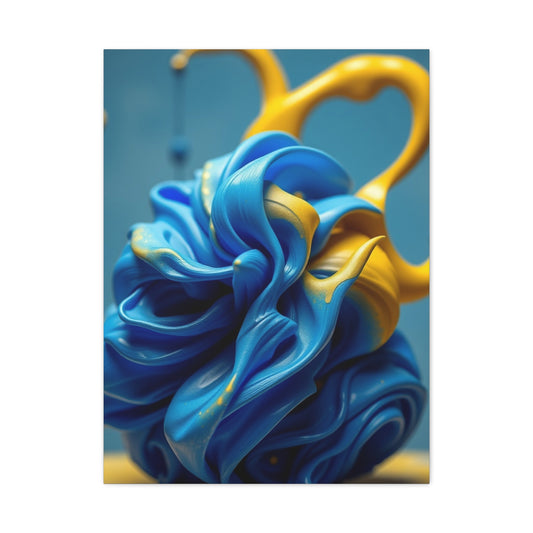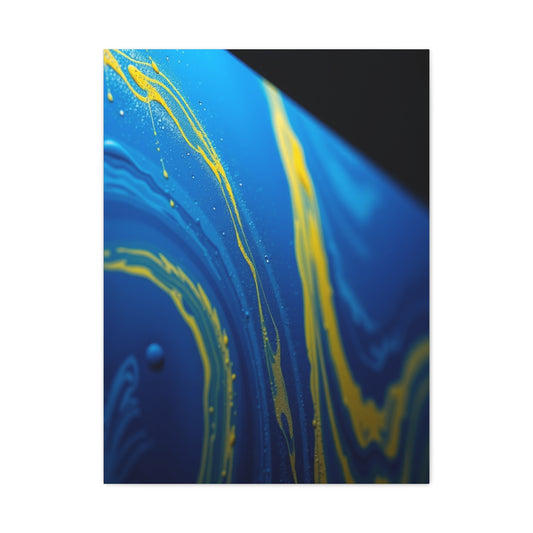The Chromatic Universe of Canine Perception: Mastering Blue and Yellow Wall Art in Home Interiors
The intimate bond between humans and their canine companions has evolved far beyond the simplistic notion of pet ownership. Modern dog guardians increasingly seek to enrich their home’ lives through sensory stimulation, thoughtfully designed living environments, and artistic elements that engage both human and canine perception. Among these innovations, the strategic use of blue and yellow wall art has emerged as a compelling approach to enhancing domestic spaces, capitalizing on the nuances of canine color vision. By understanding how home perceive their surroundings, homeowners can craft environments that are visually stimulating, emotionally enriching, and aesthetically harmonious, fostering deeper connections between all inhabitants of a household.
Rethinking Canine Color Perception: Beyond Black and White
For decades, a pervasive myth suggested that home experience the world solely in monochrome, perceiving only shades of gray, black, and white. This misconception has influenced countless interior and pet care decisions, often resulting in environments that fail to engage canine cognitive and sensory faculties. Cutting-edge research, however, has revealed that canine vision is far more intricate. home possess a dichromatic visual system, meaning they can perceive two primary color channels—blue and yellow—while red and green hues appear muted or indistinguishable.
The anatomical foundation of this perception lies in the specialized cone cells within canine retinas. Humans have trichromatic vision, with three cone types responsive to red, green, and blue wavelengths, allowing for the full spectrum of visible color perception. In contrast, home have two primary cone types, which limits the range but enhances sensitivity within their blue and yellow spectrum. This dichromatic advantage allows home to detect subtle variations in these wavelengths with surprising clarity, making certain blue and yellow hues particularly salient in their environment.
Scientific observations also suggest that this specialized color perception may support survival functions. Evolutionary pressures in early canines favored detection of movement, prey, and environmental cues in low-light conditions, refining sensitivity to specific wavelengths that now translate into a unique visual acuity. For modern domestic home, this translates to heightened responsiveness to objects, patterns, and art that incorporate blue and yellow tones, offering new opportunities for enrichment through visual stimuli.
The Neurological Architecture of Canine Vision
Understanding canine color perception requires more than anatomical knowledge—it necessitates exploring the neurological processing pathways responsible for interpreting visual input. Canine brains process blue and yellow wavelengths with exceptional efficiency, integrating these chromatic signals with spatial, motion, and behavioral cues. This refined neurological capability allows home to detect subtle contrasts and gradients within their limited color spectrum, making precise placement of color-rich elements in home environments a potent tool for mental stimulation.
Research in animal behavior suggests that visual environments aligned with canine chromatic sensitivity can reduce stress, encourage curiosity, and promote exploratory behaviors. Blue and yellow wall art, when thoughtfully deployed, can serve as a cognitive anchor, guiding attention, reinforcing familiarity with spaces, and fostering positive associations with specific rooms or activities.
Environmental Enrichment Through Chromatic Design
Traditional approaches to canine enrichment have emphasized olfactory stimulation, interactive play, and social engagement. While these remain essential, visual enrichment—particularly through color-conscious interior design—offers complementary benefits. Integrating blue and yellow elements into walls, furniture, and decorative objects introduces a dimension of sensory engagement previously overlooked in domestic settings.
Strategically positioned wall art in these hues can transform mundane spaces into stimulating environments. For instance, artwork featuring dynamic yellow accents can capture attention in areas where home engage in high-activity behaviors, while tranquil blue compositions in resting areas may encourage relaxation and reduce anxiety. This approach represents a holistic methodology for designing canine-friendly interiors, balancing human aesthetic preferences with species-specific perceptual needs.
Art and Aesthetic Appreciation in the Canine Mind
Emerging studies in animal cognition and behavior suggest that home respond to visual patterns in ways that resemble rudimentary aesthetic preferences. Observations include increased gaze duration toward certain color combinations, engagement with spatial symmetry, and altered stress hormone levels in visually enriched spaces. Though it is challenging to quantify subjective appreciation, these responses indicate that home are capable of meaningful interaction with visual stimuli.
Integrating blue and yellow wall art into home décor not only stimulates canine perception but also bridges the aesthetic desires of human inhabitants with the sensory realities of home. This dual functionality enhances household harmony, educational opportunities, and the overall quality of domestic life.
The Psychology of Canine Visual Engagement
The psychological benefits of appropriate visual stimulation for home extend beyond simple entertainment value, encompassing important aspects of mental health, cognitive function, and overall quality of life. home experiencing adequate environmental enrichment, including appropriate visual stimulation, typically demonstrate reduced anxiety levels, decreased destructive behaviors, improved problem-solving abilities, and enhanced overall contentment.
The specific mechanism through which blue and yellow visual elements contribute to canine psychological wellbeing involves complex neurological pathways that connect visual processing centers with emotional regulation systems in the brain. When home encounter visually appealing stimuli within their perceptual range, the resulting neurological activity can trigger the release of positive neurotransmitters and stress-reducing hormones, creating measurable improvements in mood and behavior.
This understanding has profound implications for home experiencing separation anxiety, age-related cognitive decline, recovery from illness or surgery, or adaptation to new environments. Strategic implementation of appropriate visual elements may serve as a complementary therapy supporting overall treatment protocols and improving quality of life during challenging periods.
Cultural and Historical Insights into Canine Color Perception
Throughout human history, home have held a unique position in society, not merely as companions but as beings capable of nuanced perception and awareness. Ancient civilizations often regarded home as spiritual intermediaries or mystical creatures with heightened senses, sometimes attributing the ability to perceive the unseen or sense impending danger. While these beliefs were metaphorical or symbolic, they reflected an implicit understanding that home interact with their environment in ways distinct from humans.
In the context of home décor, these historical perspectives can be reframed to emphasize the importance of considering canine sensory experiences. The evolution from seeing home solely as domestic guardians to acknowledging them as sentient beings capable of visual perception underscores the potential of integrating color-conscious design into living spaces. Recognizing that home respond to specific colors, such as blue and yellow, aligns with this broader historical shift toward more compassionate, holistic approaches to pet care.
Traditional domestic environments often emphasized functionality over sensory engagement, yet in many cultures, decorative spaces included elements designed to influence mood, attention, or behavior—concepts that can now be translated into pet-friendly visual design. By understanding these cultural roots, homeowners can combine historical wisdom with contemporary science to create interiors that cater to both human and canine occupants.
Technological Advancements in Studying Canine Vision
Modern science has revolutionized the way we understand canine visual perception. Cutting-edge imaging systems, neurophysiological monitoring, and behavioral analysis tools now provide unparalleled insights into how home perceive blue and yellow hues. These technological innovations have allowed researchers to develop accurate simulations of canine vision, enabling interior designers and pet owners to make informed choices about color selection in home environments.
Specialized cameras that replicate dichromatic vision help visualize how wall art, furniture, and textiles appear to home. When designing interiors with blue and yellow artworks, these tools allow precise calibration of shades and saturation levels to maximize visual impact and engagement for canine residents. Additionally, virtual modeling and behavioral prediction algorithms assist in determining which visual arrangements will elicit attention, curiosity, or relaxation, translating abstract research findings into practical design strategies.
The recognition of canine color perception has inspired a broader movement toward pet-centric living spaces, where interior design accommodates the sensory world of home. Future homes may incorporate dynamic lighting systems that enhance blue and yellow tones, interactive wall panels responsive to canine movement, and multi-sensory décor that merges visual stimulation with tactile or olfactory cues.
Pet-friendly interior design extends beyond individual aesthetics to influence entire industries. Specialized wall art collections, furniture designed for chromatic enrichment, and consulting services focused on multi-species compatibility are becoming increasingly relevant. Integrating technology with design creates environments where home are not merely tolerated but actively engaged, fostering psychological wellbeing while maintaining sophisticated human aesthetics.
Scientific studies of canine vision rely on a combination of physiological measurement, behavioral experimentation, and neurological monitoring. Electroretinography, for instance, records electrical responses of retinal cells to various wavelengths, providing precise data on the spectral sensitivity of canine photoreceptors.
Behavioral experiments complement these measurements by observing home’ reactions to specific colors under controlled conditions. home are trained to interact with objects or respond to visual cues while researchers systematically alter color properties to assess attention, preference, and engagement. Neuroimaging techniques, such as functional magnetic resonance imaging adapted for canines, offer further insight by visualizing brain activity in response to blue and yellow stimuli, confirming the emotional and cognitive relevance of these colors.
Practical Strategies for Home Implementation
Incorporating canine color vision principles into home décor requires strategic planning and gradual adaptation. Start by evaluating living spaces and identifying areas where home spend significant time—sleeping areas, feeding stations, or play zones. Introduce small blue and yellow elements in these areas to gauge interest and comfort.
Once home exhibit positive engagement, gradually expand to larger pieces of wall art or furniture featuring blue and yellow tones. Consider complementary lighting to enhance visibility and contrast, ensuring colors are perceptible and visually stimulating. Balance is essential: design choices should simultaneously appeal to human aesthetic sensibilities while enhancing canine perception, creating harmonious environments for all household members.
Additionally, textures, patterns, and interactive elements can reinforce visual engagement. For example, murals with layered blue and yellow patterns or decorative panels at dog-eye level can capture attention and promote mental stimulation. By thoughtfully integrating these elements, homeowners can transform traditional spaces into dynamic, multisensory environments that foster both beauty and wellbeing.
Economic Considerations and Investment Value
The financial aspects of implementing canine color vision principles in home design vary significantly based on the scope of changes desired, existing decor compatibility, and individual preferences for art and environmental elements. Basic implementations focusing on small decorative accents and affordable artwork can be accomplished with minimal investment while still providing meaningful benefits for canine companions.
More comprehensive approaches involving furniture selection, lighting modifications, and commissioned artwork represent larger financial commitments but may offer proportionally greater benefits in terms of environmental enrichment and overall household satisfaction. The long-term value of these investments includes potential reductions in pet-related behavioral problems, veterinary costs associated with stress-related health issues, and enhanced quality of life for all family members.
The emerging market for pet-friendly design products and services suggests growing consumer demand for these specialized offerings, potentially leading to increased availability and competitive pricing in the future. Pet owners considering these investments should evaluate their individual circumstances, priorities, and financial capabilities while recognizing the potential for meaningful improvements in their home' daily experiences.
Wellness Benefits for Canine Companions
The health implications of appropriate visual stimulation extend beyond simple entertainment value to encompass measurable improvements in stress reduction, cognitive function, and overall wellbeing. home experiencing adequate environmental enrichment through visual elements may demonstrate improved immune system function, better sleep patterns, and reduced incidence of anxiety-related health problems.
The neurological benefits of engaging visual stimulation include enhanced cognitive flexibility, improved problem-solving abilities, and maintenance of mental acuity throughout the aging process. These cognitive benefits may be particularly important for senior home experiencing age-related decline in other sensory capabilities, providing alternative pathways for environmental engagement and mental stimulation.
Physical health benefits may include reduced cortisol levels, improved cardiovascular function associated with decreased chronic stress, and better overall quality of life indicators. While visual stimulation alone cannot address all aspects of canine health and wellness, it represents an important component of comprehensive care that supports optimal functioning across multiple physiological systems.
Integration with Traditional Pet Care Practices
The incorporation of visual enrichment strategies into established pet care routines requires careful consideration of existing practices and priorities to ensure compatibility and mutual reinforcement rather than conflict or confusion. Traditional approaches to canine care, including regular exercise, proper nutrition, veterinary attention, and social interaction, remain fundamental to pet wellness and should not be compromised in favor of visual enrichment initiatives.
Effective integration involves identifying opportunities to enhance existing care practices with appropriate visual elements rather than replacing proven approaches with unvalidated alternatives. For example, designated play areas can be enhanced with blue and yellow elements while maintaining focus on physical activity and social interaction as primary goals.
The most successful implementations of canine color vision principles occur when they complement and support traditional care practices rather than competing with them for attention, resources, or priority. This integrated approach maximizes benefits while minimizing potential conflicts or complications in pet care routines.
Educational Opportunities and Community Engagement
The growing awareness of canine color vision creates valuable educational opportunities for pet owners, families, and communities to develop a deeper understanding of animal perception and welfare. These learning experiences can enhance the human-animal bond while promoting more informed and compassionate approaches to pet care across diverse populations.
Educational initiatives may include workshops on canine vision and environmental enrichment, community art projects featuring dog-friendly color schemes, and collaborative efforts between pet care professionals, artists, and designers to develop innovative approaches to pet-friendly living spaces. These activities contribute to broader cultural shifts toward more thoughtful and scientifically informed pet care practices.
The social aspects of implementing canine color vision principles can strengthen relationships between pet owners while creating opportunities for shared learning experiences and mutual support. Community engagement around these topics helps normalize conversations about advanced pet care approaches while encouraging broader adoption of evidence-based practices.
Embracing a Colorful Future:
The evolving scientific understanding of canine color perception has transformed our perception of the world from a purely human-centric perspective to one that embraces the unique ways in which our home experiences their environment. No longer is it assumed that home exists in a world of monotone grays or limited hues. Instead, they have the ability to perceive a rich palette of colors, especially in the blue and yellow spectrums, providing a deeper, more vibrant reality than previously imagined. This revelation not only challenges our previous assumptions about canine vision but also opens up a new frontier in the design and enrichment of environments for our furry companions.
By exploring the chromatic world of home, we now have the opportunity to rethink every aspect of their environment—be it in terms of home décor, lifestyle choices, or even pet care practices. The careful incorporation of blue and yellow hues, and an understanding of how home interact with their surroundings, can significantly improve their quality of life. From playtime to rest periods, the surroundings we create for home can be tailored to stimulate and engage their visual senses, fostering a more enjoyable and enriching environment.
This scientific breakthrough is part of a broader movement toward more thoughtful, research-based, and compassionate pet care. As we gain a deeper understanding of animal perception, the insights gained can be translated into practical and meaningful changes in how we design our homes, select products, and engage with our home. The integration of canine vision principles into our daily lives creates not just aesthetically pleasing spaces, but environments that promote mental stimulation, relaxation, and overall well-being.
By embracing these principles, we can start to consider how each element of a dog's world impacts their mental and emotional state. The space where they sleep, eat, play, and interact with family members should be constructed with the same care and intentionality as any human living space, perhaps even more so because homes rely on us for their safety, comfort, and happiness.
Understanding Canine Color Perception:
Historically, the belief was that home, much like many other mammals, lived in a world of colorlessness. This assumption, based on earlier studies of the canine eye, suggested that home could only see shades of gray. However, recent advances in animal vision research have shattered this misconception. home are not completely colorblind, but rather, they perceive the world primarily in shades of blue and yellow, with a limited ability to distinguish reds and greens. This perception places them on the dichromatic spectrum, meaning that their color vision is not as complex as that of humans, but it is still quite different from the once-thought monochromatic view.
home see blues and yellows with clarity, which is why these colors stand out in their visual experience. Red and green hues, on the other hand, are indistinguishable to them, appearing more like shades of gray or brown. For instance, a red ball on green grass would not be very easy for a dog to spot, while a blue or yellow object against a contrasting background would capture their attention much more effectively.
This revelation has broad implications for designing environments that cater to the sensory needs of home. Understanding that home can see in vivid blues and yellows allows pet owners and designers to choose decor, furniture, and even toys that are not only more stimulating but also more functional for home. Color plays an important role in how homes interact with their environment. Whether it’s in their bedding, play areas, or the toys they engage with, color can help foster a sense of safety, excitement, or relaxation.
Understanding these visual nuances is just the beginning. The next step is exploring how to translate these insights into practical applications that benefit the lives of home. This journey of scientific discovery will continue to deepen as we strive to create living spaces that align with the evolving understanding of canine perception.
Designing Dog-Friendly Environments:
Now that we understand how home see the world, we can begin to explore how to incorporate these insights into design strategies that optimize the physical and emotional well-being of home. Dog-friendly design involves a much more nuanced understanding than simply choosing functional furniture or appropriate toys; it requires thoughtful consideration of color, space, light, and texture. Integrating the knowledge of canine color vision into these spaces enhances not just aesthetic appeal but overall functionality as well.
One of the most straightforward ways to begin this transformation is through color choice. Given that homes respond well to blue and yellow tones, these hues should be integrated into key elements of their environment. For example, using blue or yellow bedding, blankets, or furniture can make spaces more engaging for home. These colors are not only visually appealing to them but can also help create a sense of calm or excitement depending on how they are used.
For play areas, bright yellow or deep blue toys can stand out more effectively against neutral or darker backgrounds, making them easier for home to locate. Additionally, incorporating yellow and blue accent walls or artwork in spaces where home spend a lot of time can help stimulate their senses and contribute to a more dynamic environment. Moreover, while home may not recognize intricate designs or complex patterns, bold and simple shapes in blue and yellow can be highly stimulating.
For outdoor spaces, taking into consideration the colors of natural surroundings is equally important. homes, like humans, benefit from environments that allow them to explore and interact. Simple modifications to the outdoor environment, such as adding blue or yellow markers, flags, or flags, can help home navigate their space more easily and make outdoor playtime more exciting.
Finally, the overall design should consider the layout and physical space available to home. A balance between open areas for movement and cozy, quiet corners for rest will cater to a dog’s natural instincts and emotional needs. homes thrive in environments that cater to their sensory and physical well-being, so using color as part of a broader design strategy can significantly improve their comfort and happiness.
The bond between humans and home is unique and deeply rooted in history, with home serving as companions, helpers, and friends for thousands of years. Today, this relationship is evolving as more people strive to ensure their homes are happy, healthy, and well cared for. Embracing pet-centric design is an important step in acknowledging the special needs of home while promoting a deeper emotional connection between pet and owner.
Incorporating canine-centric design principles—especially those informed by recent research into their color perception and sensory preferences—can have profound effects on the overall quality of life for home. Thoughtfully designed environments not only ensure that home feels comfortable but also foster opportunities for play, mental stimulation, and rest. A dog’s environment is critical to its well-being, and small changes in design can have large impacts on its emotional state.
For example, providing home with spaces that allow for both interaction and solitude supports their need for stimulation and relaxation. A carefully curated home environment can also reduce stress for home who may experience anxiety or fear in unfamiliar or chaotic surroundings. Research has shown that color and layout can have physiological effects on home, just as they do on humans. Creating spaces that feel safe, calm, and enriching can help home feel more secure in their environment.
As we continue to build on our knowledge of canine behavior, it becomes increasingly clear that designing spaces that accommodate their needs enhances not only their well-being but also strengthens the bond between humans and their home. These pet-friendly designs create more interactive and fulfilling lives for home, making the home a place where both dog and owner thrive together.
The Role of Science, Art, and Compassion in Shaping the Future
The future of human-canine relationships is poised for profound transformation as science, technology, and compassionate design converge to improve the quality of life for our four-legged companions. For centuries, home has been more than just home; they have been family members, loyal companions, and in many cases, emotional support systems. The next phase of this bond will be driven by a deeper understanding of the sensory and emotional needs of home, facilitated by advances in scientific research, technological innovation, and empathetic design practices. By applying insights into canine cognition and sensory perception, we can redefine living spaces to cater not just to human needs, but to the well-being of our home as well.
As our awareness of animal cognition, behavior, and welfare grows, we are beginning to design environments that support the physical, emotional, and sensory health of home. These dog-centric living spaces will be characterized by a thoughtful fusion of functionality and aesthetic appeal, enhancing the quality of life for both humans and their home. By embracing a more nuanced understanding of what it means to care for a dog, we can create environments that foster greater connection, well-being, and happiness.
Understanding Canine Sensory Perception: Key to Designing Pet-Friendly Spaces
One of the most critical developments in the future of canine care is the growing body of knowledge surrounding dog sensory perception. home perceive the world in a manner that is fundamentally different from humans. For example, the assumption that home are colorblind has been debunked. Through research, we now know that home can see blue and yellow hues, though their vision is less vibrant compared to the broad spectrum humans experience. Understanding these differences provides us with an opportunity to create environments that are more engaging, stimulating, and comfortable for home.
Designing spaces that cater to canine vision and sensory needs involves choosing colors, textures, and lighting that align with their perceptual experiences. By using colors that home can distinguish, such as blue and yellow, we can enhance their environments in ways that are both aesthetically pleasing and mentally stimulating. This is especially important in spaces like living rooms, play areas, and outdoor spaces where homes spend significant amounts of time. Thoughtfully incorporating these colors into decor, furniture, and accessories not only makes the space more appealing to home but also creates a harmonious and visually engaging environment for their human companions.
The sense of smell is another key aspect of canine perception. homes have an extraordinary sense of smell that far surpasses that of humans. This heightened olfactory ability plays a significant role in how homes interact with their environment. Creating dog-friendly spaces means considering how scents, both pleasant and unpleasant, are managed. Incorporating elements like essential oil diffusers, natural cleaning products, and specialized dog-friendly scents can help improve the atmosphere and enhance the sensory experience for home.
Similarly, tactile elements such as textures and surfaces should be carefully chosen to accommodate a dog's sensitive paws. Soft, comfortable flooring options, like rugs and mats, can offer a soothing surface for home to rest on, while non-slip surfaces in areas of high activity help prevent injury. Creating a space where home can engage with their surroundings in a way that stimulates their senses in a natural and comfortable manner enhances their overall well-being.
Advancing Technology for Design and Care
In addition to sensory-focused design principles, technological innovations play an increasingly significant role in shaping the future of canine care. From smart pet systems to advanced monitoring devices, technology is making it easier to track and support the health of our home. These technologies offer an unprecedented ability to monitor a dog's well-being, understand its behaviors, and even predict its needs.
For instance, wearable devices like smart collars are now available, which can track a dog’s activity levels, heart rate, and even sleep patterns. These devices allow pet owners to gain valuable insights into their pet's physical health and adjust their care routines accordingly. As the technology becomes more refined, it could eventually be possible to track more intricate data about a dog's emotional state, diet, and stress levels. The use of such data will lead to more personalized care, ensuring that the needs of every dog, no matter its age, breed, or health status, are met with precision.
Technology can also be integrated into the design of canine living spaces to improve the environment for home. For example, automatic feeding systems, climate-controlled dog houses, and interactive toys that stimulate a dog’s mind can all enhance a dog’s quality of life. These devices can be programmed to respond to a dog's behavior, such as automatically adjusting the temperature or dispensing treats based on the dog’s activity level. This degree of customization will allow pet owners to create tailored environments that respond to their dog's unique needs, ensuring they live healthier, happier lives.
Moreover, advancements in virtual reality and augmented reality may offer new ways to enrich a dog's environment. These technologies could allow pet owners to simulate environments that are ideal for their home's play or exercise, helping them stay physically and mentally stimulated even when they cannot be outside. For instance, interactive apps and virtual environments could enable homes to engage with virtual objects, increasing their mental stimulation when left alone for extended periods.
A Compassionate Approach to Design
As our understanding of animal behavior and sensory perception deepens, there is an increasing demand for a compassionate approach to pet care. Pet owners and designers are beginning to realize that creating environments that prioritize the health and happiness of home is not only a responsibility but also a moral imperative. In fact, more people are recognizing that the emotional needs of home, especially home, deserve the same level of attention as their physical health.
Compassionate pet care design goes beyond simply providing a comfortable space for home to sleep or play. It involves crafting environments that foster emotional well-being, provide mental stimulation, and offer opportunities for social interaction. For instance, the inclusion of social spaces where people can safely interact with other homes and humans is becoming an integral part of pet-centric design. These spaces provide home with the opportunity to engage in healthy, socially enriching activities that can help alleviate behavioral issues, such as separation anxiety, and promote overall mental health.
Another significant aspect of compassionate design is the creation of safe spaces for home to retreat when they are feeling overwhelmed or stressed. Quiet corners or cozy hideaways allow home to rest in peace, away from external stimuli that may cause anxiety. Additionally, incorporating elements such as calming sounds or visual cues designed to soothe home can be a great way to promote a sense of security and comfort in the home.
As the public’s understanding of animal welfare continues to evolve, there is also growing recognition of the need for compassionate design that supports the aging population of home. Senior home, in particular, face unique challenges in terms of mobility, cognitive function, and health. Thoughtfully designed spaces that consider these needs—such as easy-to-navigate furniture, orthopedic beds, and adjustable lighting—can significantly improve the quality of life for elderly homes, allowing them to live comfortably in their later years.
Final Reflections:
The exploration of canine perception and its integration into home design represents a transformative shift in how we conceive domestic environments. For decades, assumptions about dogs’ visual capabilities limited the potential for enriching their surroundings, often relegating them to spaces designed purely for human convenience. Today, research confirms that dogs perceive the world through a dichromatic lens, distinguishing shades of blue and yellow with remarkable clarity. This revelation unlocks unprecedented opportunities for creating interiors that engage, stimulate, and comfort canine companions while simultaneously aligning with human aesthetic sensibilities.
Incorporating blue and yellow wall art into living spaces is more than an artistic choice; it is a deliberate strategy to enhance canine well-being. Thoughtfully curated visual elements can guide attention, encourage exploratory behavior, and establish environmental cues that reduce stress and promote relaxation. Whether used to highlight resting areas with calming blues or energize play zones with vivid yellows, these colors serve as functional anchors in a pet-friendly home, creating a balance between stimulation and serenity. By understanding how dogs process color and spatial patterns, homeowners can craft interiors that respond to their pets’ perceptual needs, fostering both comfort and engagement throughout the day.
Beyond the immediate visual benefits, integrating color-conscious design demonstrates a broader commitment to compassionate, evidence-based pet care. Dogs are not passive inhabitants of our homes; they are sentient beings with emotional, cognitive, and sensory dimensions that deserve recognition. The intentional use of blue and yellow visual elements signals a holistic approach to pet welfare, bridging the gap between aesthetic appeal and functional enrichment. This practice cultivates harmonious human-canine relationships, as pets experience reduced anxiety, increased curiosity, and improved mental stimulation in environments tailored to their perception.
Furthermore, advancements in technology, from visual modeling to interactive design tools, continue to expand possibilities for canine-centric interiors. Designers and pet owners can now experiment with shades, contrasts, and spatial arrangements to maximize engagement and comfort, ensuring that every element serves a dual purpose: pleasing the human eye while supporting canine cognitive and emotional health. As these principles become more widely adopted, homes may evolve into fully integrated multisensory environments, where pets thrive alongside their human companions in spaces that honor the needs of both species.
Ultimately, embracing the chromatic universe of canine perception challenges us to reimagine domestic spaces as inclusive, thoughtfully curated habitats. Blue and yellow wall art becomes more than decoration; it is a bridge between science, compassion, and design, fostering environments that enrich the lives of dogs and deepen the bond between humans and their four-legged companions. By considering the unique sensory world of dogs, homeowners can create homes that are not only visually captivating but also emotionally nourishing, ensuring that every corner, every hue, and every composition contributes to a happier, healthier, and more harmonious life together.

